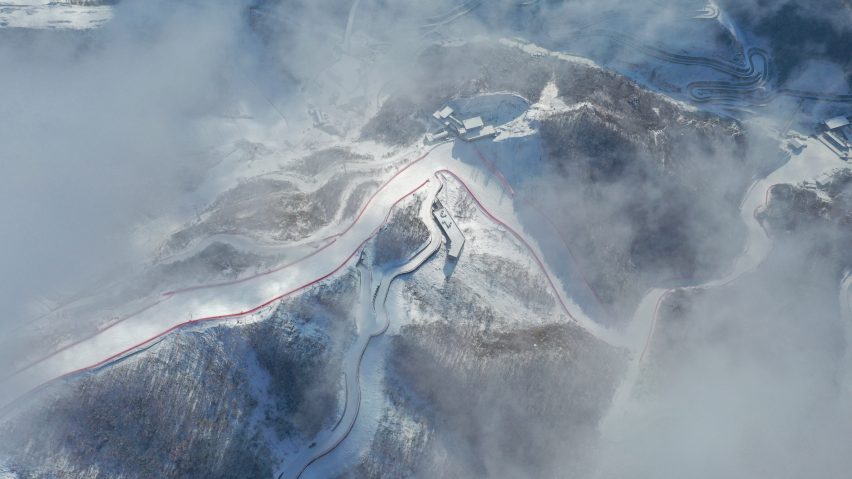
Dezeen's guide to the architecture of the Beijing 2022 Winter Olympics
With the Beijing 2022 Winter Olympics due to commence on 4 February, Dezeen rounds up the most architecturally significant venues, including a new stadium by Populous and the world's first permanent structure for big air extreme snow jumping.
The majority of the venues for the upcoming Winter Games are not new, with some built as venues for the Beijing 2008 Summer Olympics as the city becomes the first ever to host both editions of the 16-day competition.
Most famous among these is the Beijing National Stadium, also known as the Bird's Nest, which was designed by Swiss architecture studio Herzog & de Meuron.
This system of reusing stadiums follows the precedent set by the Tokyo 2020 Olympic Games and has been touted by the organizing committee as a more sustainable approach.
However, some notable new structures will also be on display as the Olympic cauldron is aflame once again in China.
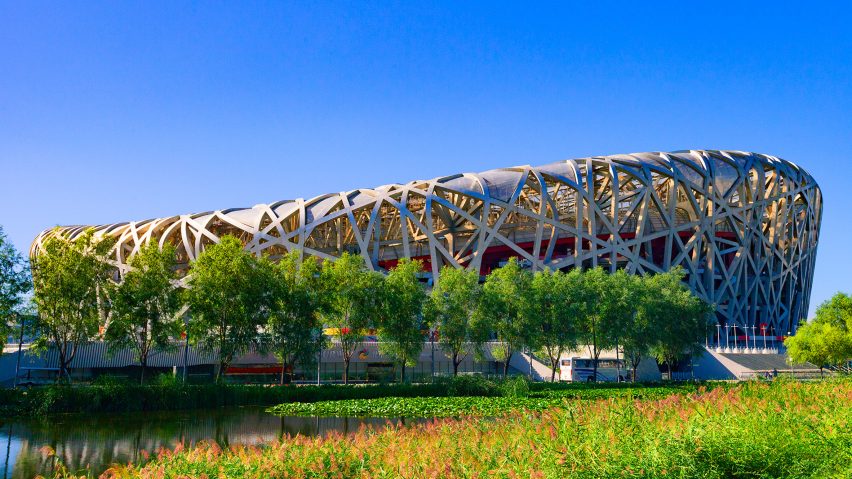
Beijing National Stadium by Herzog & de Meuron (2007)
Better known as the Bird's Nest, this Herzog & de Meuron-designed stadium is easily recognisable as the main venue for the 2008 Beijing Olympics thanks to its steel lattice envelope.
No sporting competitions will take place here next month, but the 80,000-seater stadium, for which acclaimed Chinese artist Ai Weiwei was a design consultant, will reprise its role as the host of the opening and closing ceremonies for the upcoming winter games.
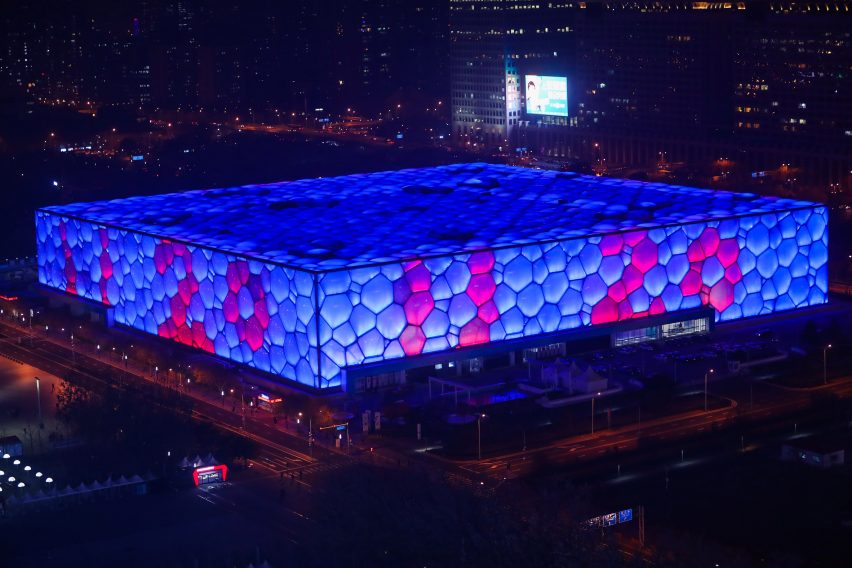
Beijing National Aquatics Center by PTW Architects (2007)
Designed by a consortium including Australian studio PTW Architects and nicknamed the Water Cube, the National Aquatics Center is another 2008 Olympics venue being repurposed for the Winter Olympics.
Organizers say it has been transformed into the Ice Cube with the addition of ice-making and climate control equipment. Rather than hosting swimming and diving, this time around it will act as a curling rink.
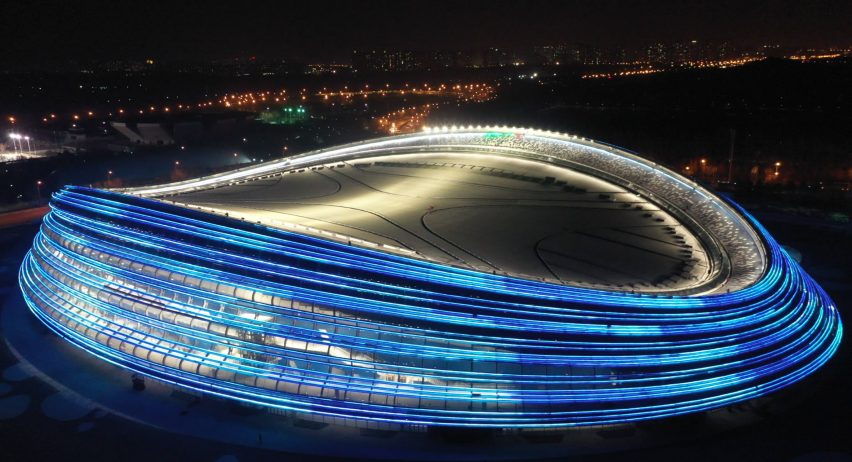
National Speed Skating Oval by Populous (2021)
Designed by stadium specialist architecture studio Populous, the National Speed Skating Oval is the only new venue built in Beijing's Olympic Park for the 2022 Winter Games, having been constructed on the site of the hockey and archery fields used in 2008.
It has been dubbed the Ice Ribbon in reference to the 22 light-up strands encircling the stadium, with Populous promising that the 12,000 spectators will hear "every sound from skates on ice" around the 400-metre race track.
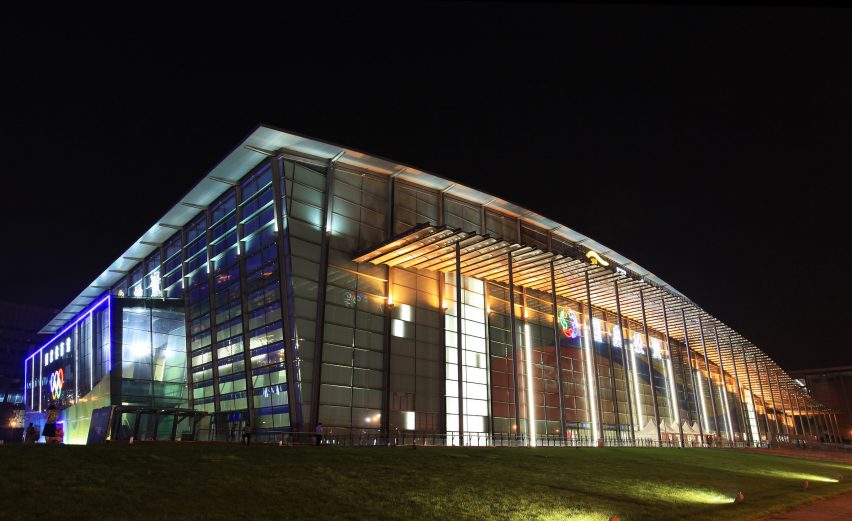
Beijing National Indoor Stadium by Glöckner Architekten GmbH (2007)
Another 2008 legacy venue with a playful moniker – in this case The Fan, after its resemblance to a traditional Chinese folding fan – the National Indoor Stadium will be swapping rhythmic gymnastics, trampolining and handball for ice hockey at Beijing 2022.
The 20,000-seater arena was designed by German firm Glöckner Architekten GmbH.
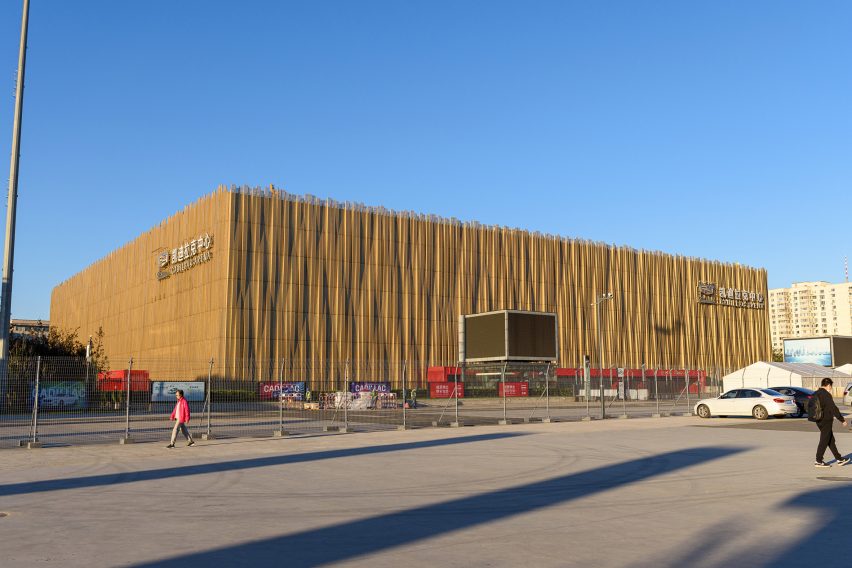
Wukesong Sports Centre by David Manica and the Beijing Institute of Architectural Design (2008)
The Wukesong Sports Centre, officially known as the Cadillac Center, staged the basketball tournament at the 2008 Summer Games and has since become one of Beijing's major multipurpose arenas.
It will share responsibility for hosting the ice hockey at the upcoming Olympics with the National Indoor Stadium, making use of an ice rink that can be converted back into a basketball court in under six hours that was installed in 2015 as part of a renovation worked on by Populous.
Golden perforated aluminium ribbons envelop the building, designed by David Manica when working for HOK Sport – now Populous – in association with the Beijing Institute of Architectural Design.
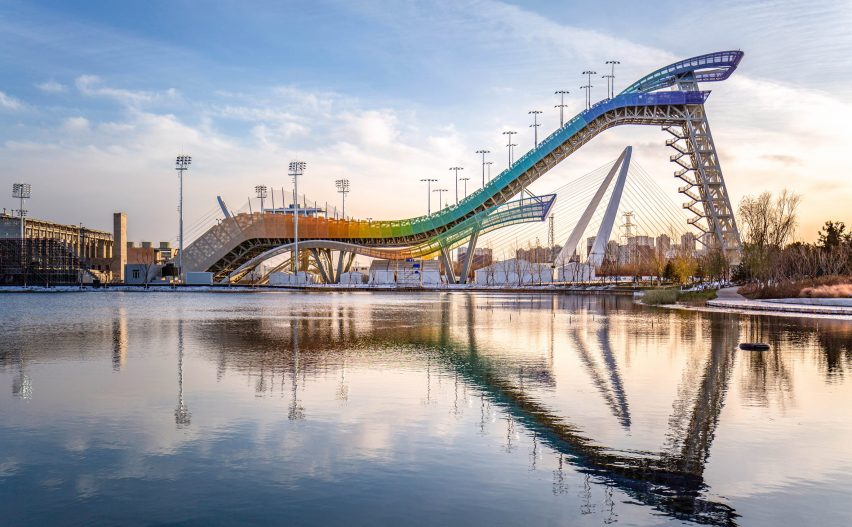
Big Air Shougang by TeamMinus (2019)
Perhaps the most eye-catching structure to appear in this list, Big Air Shougang is among the small number of new venues built for Beijing 2022, where it will host the skiing and snowboarding "big air" extreme jumping events. According to the Games' organisers, it is the world's first permanent big air structure.
The venue was designed by TeamMinus, a studio led by professor Zhang Li, who also heads the Architectural Design and Research Institute of Tsinghua University.
Clad in colourful perforated aluminium panels, it has been constructed on the site of one of Beijing's largest former steel mills, with the plant's four industrial cooling towers still standing watch.
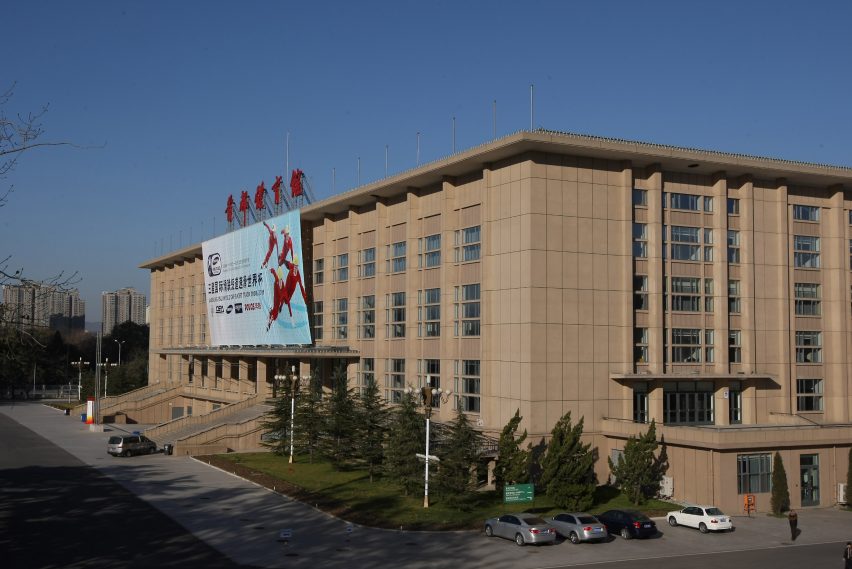
Capital Indoor Stadium by Ming Xiong (1968)
Built in 1968, the Capital Indoor Stadium hosted table tennis matches in 1971 as part of the ping-pong diplomacy programme credited with thawing relations between the USA and China during the Cold War.
The arena was renovated ahead of the 2008 Olympics, where it staged the volleyball tournament, and will be home to the figure skating and short track speed skating competitions as athletes descend on Beijing once again next month.
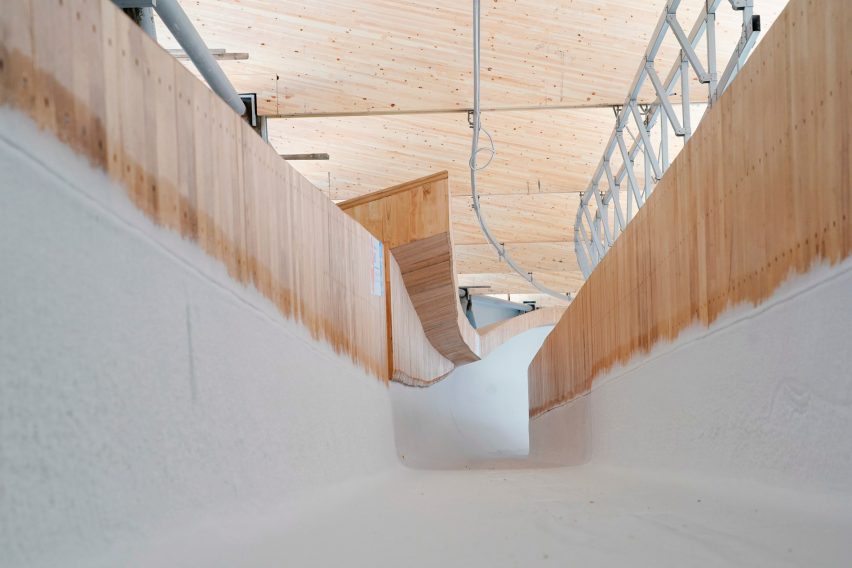
National Sliding Centre by Atelier Li Xinggang (2021)
This 1,975 metre-long sliding track, in the Yanqing Winter Olympic Zone 75 kilometres north of Beijing, is characterised by a tiled wooden roof across its entire length and will host the bobsleigh, skeleton and luge events at February's Games.
China's first sliding centre and only the third to be built in Asia, it was designed by the studio of architect Li Xinggang within the China Architecture Design & Research Group, which also designed Yangqing Olympic Village and the National Alpine Skiing Centre.
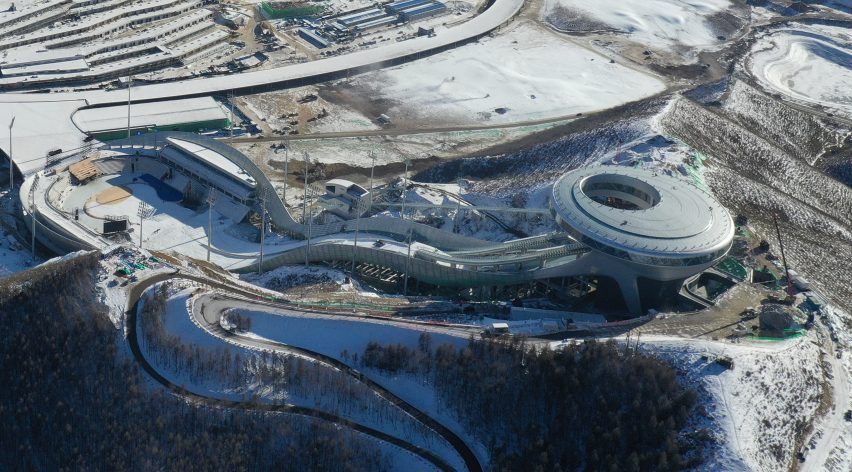
National Ski Jumping Centre by TeamMinus (2020)
Another new venue for Beijing 2022 designed by TeamMinus, the National Ski Jumping Centre has been nicknamed Snow Ruyi on account of its likeness to a ruyi, a traditional Chinese sceptre talisman associated with power and good fortune.
At the top of the slope is a 40-metre high circular viewing platform containing a panoramic restaurant, with a judges' tower halfway down and a stadium at the bottom.
The centre will stage the ski jump and Nordic combined events at this year's Winter Olympics, before becoming a training facility for Chinese athletes and tourist resort. It is located in the Games' Zhangjiakou Zone at a popular ski destination 180 kilometres northwest of Beijing, to which visitors will be transported via a newly built intercity railway.
Images courtesy of Beijing 2022 unless otherwise stated. Top image shows the National Alpine Skiing Centre.
Dezeen is on WeChat!
Click here to read the Chinese version of this article on Dezeen's official WeChat account, where we publish daily architecture and design news and projects in Simplified Chinese.